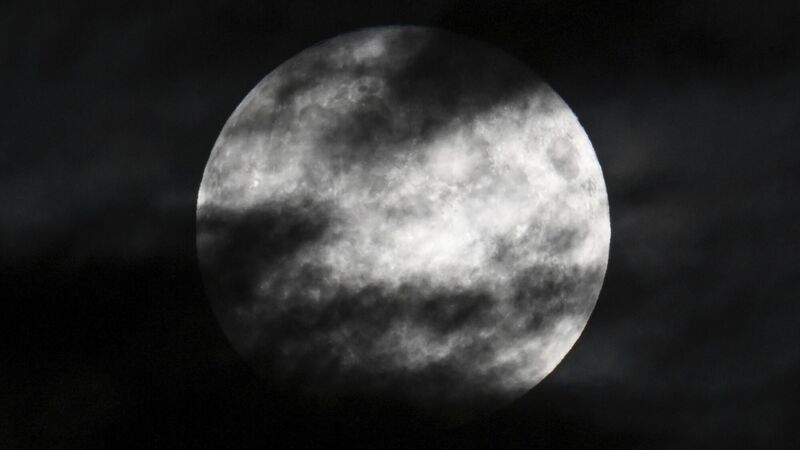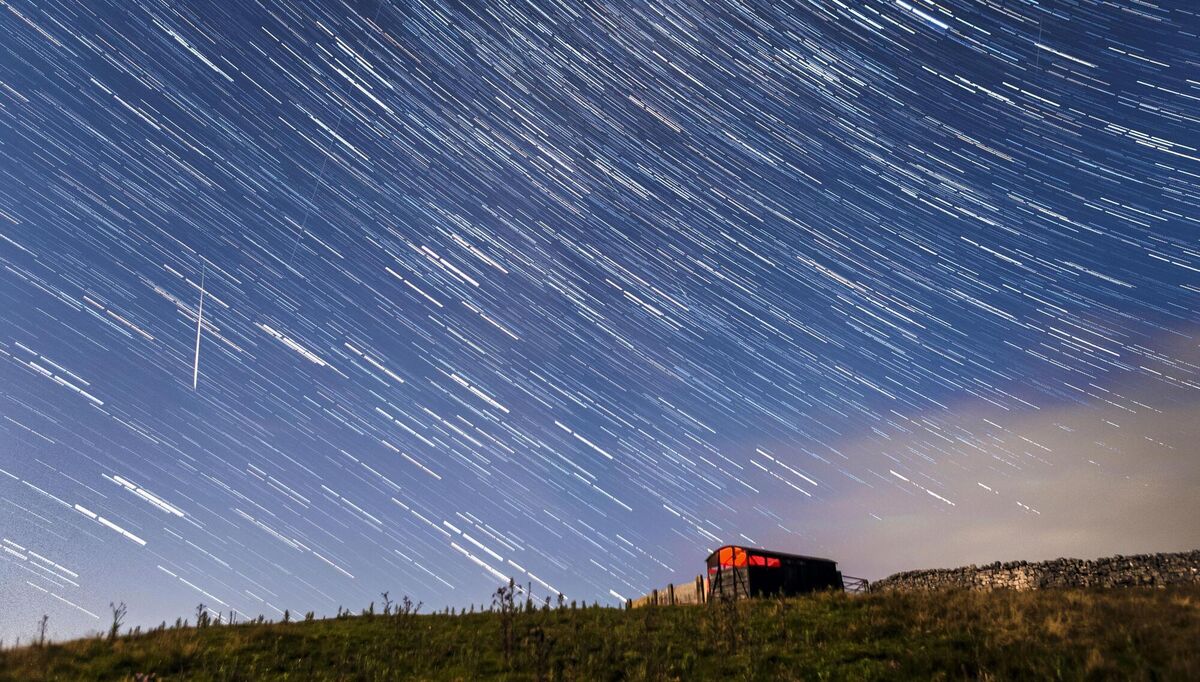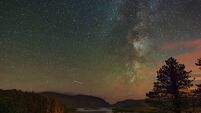SkyMatters: Supermoons and the queen of meteor showers

Between clouds the supermoon can be seen in the night sky, in Frankfurt, Germany, Tuesday, Aug. 1, 2023. The cosmos is offering up a double feature in August: a pair of supermoons culminating in a rare blue moon on Aug. 30. (Arne Dedert/dpa via AP)
The Moon has played and continues to play a prominent role in our skies this August.
On the one hand, there are two occurrences of the so-called Supermoon. The first happened on August 1st and the next is due on August 31st. Since the second Supermoon is also the second full moon in a month, it is named a Blue Moon.
Originally a Blue Moon referred to something that is impossible, and the phrase dates all the way back to the 16th century.
More recently, after the 1883 eruption of the Krakatoa volcano reports of the Moon looking blue were recorded from across the globe.
Given the Moon did actually have a blue tinge at that time, the meaning of Blue Moon evolved to mean something that doesn’t happen very often, but nevertheless is possible.
It is now known that small particles thrown high up into the Earth’s atmosphere by the power and scale of the Krakatoa eruption were enough to scatter blue light (primarily) in pretty much the same way that small particles give us our normal blue sky, painting the Moon a transient blue tint.
Once these particles drifted downwards and out of the upper atmosphere the Moon resumed its normal colour. That said, rising Moons are generally redder in colour and depending on the state of Earth’s upper atmosphere can be very red indeed. While Blue Moons are rare, Red Moons are frequent!
The Blue and Super Moon on 31st August will be observable just after sunset. However, although there is a fascination with Supermoons they’re actually not a great time to observe our nearest cosmic neighbour.
Given that Supermoons happen when the Moon is full, it means the Sun is shining directly overhead to someone standing on its surface.
As any of us know from looking at shadows on the Earth, they become less and less evident as the Sun moves to being more and more directly overhead. Without shadows, a landscape looks rather flat. This is true for the Moon also.
Instead of craters, mountains and other geological structures jumping out from their surroundings as they cast shadows, they almost disappear into their surroundings. Is this disappointing? Well no!
Because it means we don’t have to wait for a Supermoon to get a super and indeed much better view of the Moon. My advice would be to look at the Moon when it’s about half-illuminated and if you have binoculars or a small telescope you will be rewarded with stunning views of the scars left by impacts on the lunar surface dating back billions of years.

The Moon also plays a prominent role around mid-month. In this instance, it’s because it’s a barely visible crescent Moon. With the Moon being effectively absent, the night sky will be dark (assuming you can get away from street lights). And for the first time in a few years that will give us the potential for great conditions for viewing the most impressive meteor shower of the year – the Perseids.
With up to 60 meteors per hour, many of them bright enough to be seen even from areas that have some light pollution, this is a year not to miss this queen of showers. (I’m not even going to tempt fate by mentioning the weather!)
Meteors are caused by small dust particles burning up in the Earth’s atmosphere as our planet crashes through the debris train left behind by a comet, in this case Comet Swift-Tuttle which was first observed in 1862.
The centre of that debris train is crossed on the night of August 12th and the morning of August 13th and so this is the best night to get outside and peer skywards. If the weather on that night looks like being inclement then it’s still worth going outside for three to four days either side of 12th.
Despite all the talk about Supermoons, the Moon is probably most super this month when it’s least visible. Perhaps a moral tale of sorts that we can take into our daily lives…







